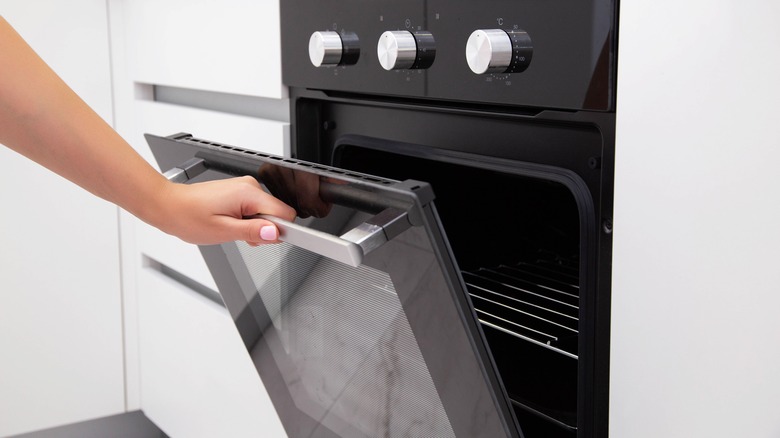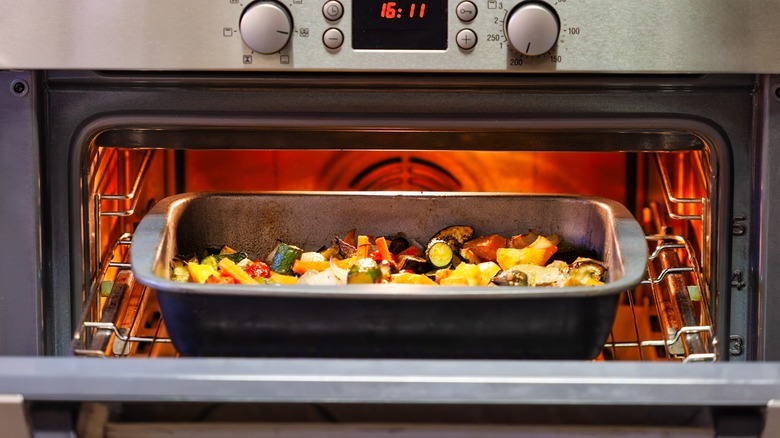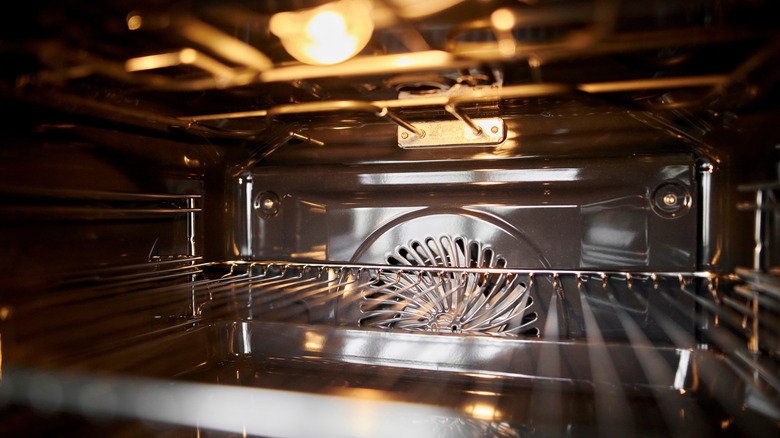Convection Vs Regular Baking: The Difference Explained
If your kitchen has a convection oven that you have no idea how to use, you are not alone. All too often, the convection setting remains untouched because we have no idea how to use it or what it even means. Most home convection ovens have the option to turn the convection setting on and off, making it easy for cooks to avoid convection cooking and stick to the regular baking oven. But it's time to conquer our kitchen fears and learn what the convection oven is all about and how you can use it to your advantage.
Convection ovens are less common kitchen appliances than conventional baking ovens. While the two types of oven may seem similar at first glance, the fan mechanism in the convection oven distributes the heat throughout for a completely different way of cooking. If you've been nervous about trying convection cooking, now is the time to try it out for fast and even cooking. It's a great way to make crispy and tender food in less time than ever.
The difference between convection and conventional bake
The key difference between a convection oven and a regular baking oven is how the heat is distributed. A standard oven has two heat sources at the top and bottom of the appliance. However, a convection oven includes a third heat source and a fan, which help distribute the heat throughout the oven. Because of the airflow, the whole oven can reach a more consistent temperature.
The well-distributed heat in a convection oven allows food to cook more quickly and evenly than in a conventional oven, which makes it ideal for baking on multiple racks. In a standard baking oven, the distance from the upper or lower heat source affects how quickly it cooks and can lead to parts of the food browning too fast or drying out before the rest is cooked. But, in a convection oven, you can place food on both racks without worrying about one rack cooking faster than the other. If you aren't sure whether you have a conventional or convection oven, you can look for the convection setting. A regular baking oven will not have this option or the fan mechanism.
How to use your convection oven
Although effective, using the convection setting on your oven can be very daunting. Most recipes give baking and roasting instructions for regular ovens, making it complicated to switch to convection cooking. But it's definitely worth it, especially for the right recipes. Convection ovens are excellent for roasting meat dishes like roasted chicken, roasted turkey, and ham. The even heating allows the outer layer to become deliciously crisp while the inside stays juicy and flavorful. You can also use a convection oven for crisp, roasted vegetables. Buttery pie crusts and other baked goods bake beautifully with convection cooking. However, it's not ideal for delicate cakes and flans.
To convert standard recipe instructions to a convection oven, you'll need to do some math. Because convection cooking is faster, you can lower the listed cooking time on recipes by 25%. Alternatively, you could keep the cooking time the same but adjust the temperature to 25 degrees lower than instructed. In some cases, no adjustment is necessary if your convection oven has an auto-adjust feature that will do this work for you.


